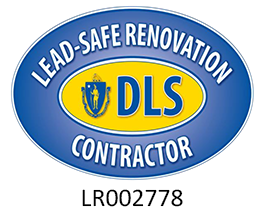“Location, location, location.” We’re all familiar with this real estate mantra. In a nutshell, it means that a home’s value can increase or decrease due to its location. But the orientation of a home is important as well.
Whether you’re a house hunter, prospective house builder, or just curious about your existing residence, read on to learn why the direction a house faces is important.

What is house orientation?
A home’s orientation refers to the direction that the front façade faces. For example, if a home’s main entrance faces south, it would be described as south-facing. Primarily, it affects the amount of sunlight it receives which affects heating and cooling costs, landscaping, exterior maintenance, and more.
While there is no right or wrong way for a home to face, each orientation offers a different set of benefits and drawbacks.
South-facing and east-facing homes receive the most sunlight.
Most everyone is attracted to homes that receive abundant natural light. It not only makes a space feel larger and more welcoming, exposure to natural sunlight boosts vitamin D and helps promote a healthy sleep-wake cycle. In the U.S., south-facing windows receive the greatest amount of sunlight. Additionally, because the sun rises in the east and sets in the west, east-facing homes receive the most morning sun while west-facing homes receive more afternoon sun. Heat from the sun can help reduce heating costs in the winter, but in the summer, that heat can lead to higher cooling bills.
Direct sun exposure can lead to sun damage.
One downside of direct sun exposure is the damage it can cause over time to siding, roofing, furniture, fabrics, and flooring. The south-facing side of your home will be most affected by sunlight, so you’d be wise to budget for home maintenance tasks like repainting or re-siding more frequently. For south-facing windows, it’s also a good idea to protect your furniture from damage by installing UV-blocking window film, curtains, or shades.
North-facing homes experience worse cold-weather effects.
If the main entrance of your home faces north, your home is more likely to fall victim to ice dams, icicles, slippery driveways and walkways, and slower-to-melt snow. On a south-facing home, however, the direct sunlight it receives means any ice and snow that accumulates will melt more easily than it will on the houses across the street.
House orientation can influence décor choices.
The amount of sunlight a room receives may affect the colors and fabrics you choose to decorate with. For example, you may want to confine bold and dark colors to south-facing rooms which receive plenty of sunlight most of the day. Keep north-facing rooms feeling light and bright by choosing softer hues. Equip east-facing bedrooms with sun-blocking window treatments so sleepers aren’t roused by the early morning light.
A home’s direction can affect landscape choices, too.
Consider your home’s orientation when planning outdoor spaces. Because we know that the direction your home faces determines how much sunlight it receives, sun-loving plants will flourish in a south-facing yard. Additionally, a south-facing backyard is an ideal location for a swimming pool. On the other hand, if you prefer to use your yard when it’s shady and a bit cooler, you’ll appreciate a northern exposure. Choose plantings that prefer low light for north-facing areas of the property.
Ready to make the most of your home’s orientation? Contact Pann Home Services for all your remodeling needs inside and out. From kitchen and bathroom face-lifts and room additions to custom decks and porches, Pann is ready to turn your remodeling dream into a reality. Contact us today to get started.









